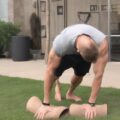The Problem with Glorifying the Pain Cave
In fitness and endurance sports, we often hear about the “pain cave” – that place of intense physical and mental suffering that athletes push themselves into during tough workouts or competitions. While there’s value in challenging ourselves, the glorification of pain and suffering in fitness culture can be problematic and even dangerous. This article explores why we should stop glorifying the pain cave and instead focus on more compassionate, sustainable approaches to health and fitness.
What is the Pain Cave?
The “pain cave” refers to a state of extreme physical discomfort and mental anguish that athletes may experience during intense training or competition. It’s often described as a dark place where you face your limits and push through them. While testing our boundaries can lead to growth, constantly dwelling in the pain cave comes with risks:
- Increased injury risk from overtraining
- Mental burnout and loss of motivation
- Neglecting proper recovery and rest
- Developing an unhealthy relationship with exercise
- Ignoring important physical warning signs
The Pitfalls of Pain Worship
Our fitness culture often celebrates those who push themselves to extremes, praising their “mental toughness” and ability to suffer. But this mindset can be harmful in several ways:
1. It promotes an unsustainable approach: Constantly pushing to our limits isn’t a long-term strategy for health or performance.
2. It can lead to a negative relationship with exercise: When we associate fitness primarily with pain and suffering, we may start to dread workouts rather than enjoy them.
3. It ignores the importance of rest and recovery: Growth happens during recovery, not just during intense effort.
4. It can mask underlying health issues: Pushing through pain might mean ignoring important signals from our bodies.
A More Compassionate Approach to Fitness
Instead of glorifying the pain cave, we can adopt a more balanced, compassionate approach to fitness:
- Listen to your body: Pay attention to what your body is telling you. Pain isn’t always a sign of progress.
- Focus on consistency over intensity: Regular, moderate exercise often yields better long-term results than sporadic, extreme efforts.
- Celebrate all forms of movement: A gentle yoga session or a walk in nature can be just as valuable as an intense workout.
- Prioritize recovery: Give your body the rest and nourishment it needs to adapt and grow stronger.
- Find joy in the process: Choose activities you genuinely enjoy, not just those that push you to your limits.
The Benefits of a Balanced Fitness Approach
When we move away from pain worship and embrace a more balanced approach to fitness, we can experience numerous benefits:
- Improved long-term consistency and adherence to exercise
- Better overall health and well-being
- Reduced risk of injury and burnout
- More enjoyment and satisfaction from physical activity
- A healthier relationship with our bodies and exercise
- Sustainable progress towards our fitness goals
Remember, the goal of fitness should be to enhance our lives, not to prove how much suffering we can endure. By shifting our focus from pain to well-being, we can create a more positive and sustainable approach to health and fitness.
Redefining Success in Fitness
It’s time to redefine what success looks like in our fitness journeys. Instead of measuring progress solely by how much pain we can endure or how intensely we can push ourselves, let’s consider alternative metrics:
- Consistency in showing up for workouts
- Improvements in overall energy and mood
- Better sleep quality
- Increased strength and mobility in daily life
- The joy and satisfaction we derive from movement
- How well we recover between sessions
By broadening our definition of success, we can create a more holistic and fulfilling approach to fitness that supports our overall well-being.
FAQ: Rethinking the Pain Cave Mentality
Q1: Does avoiding the pain cave mean I’m not pushing myself hard enough?
A1: Not at all. Challenging yourself is important, but it doesn’t always have to involve extreme discomfort. You can make progress and achieve your goals through consistent, moderate effort without constantly pushing to your limits.
Q2: How can I stay motivated without the “no pain, no gain” mindset?
A2: Focus on intrinsic motivation – the joy of movement, the satisfaction of progress, and the overall benefits to your health and well-being. Set process-oriented goals rather than just outcome-based ones, and celebrate small victories along the way.
Q3: Are there any situations where pushing through discomfort is appropriate?
A3: Yes, there can be times when pushing through discomfort is part of growth. The key is learning to distinguish between productive discomfort and potential harm. Always listen to your body and be aware of your limits.
Q4: How can I shift my mindset from pain glorification to a more balanced approach?
A4: Start by reframing your goals and what success means to you. Focus on consistency, enjoyment, and overall well-being rather than just intensity. Educate yourself on the importance of recovery and listen to your body’s signals.
Q5: Won’t I see slower progress if I’m not constantly pushing my limits?
A5: Not necessarily. Sustainable, consistent effort often leads to better long-term results than sporadic intense pushes. By avoiding burnout and injury, you’re more likely to maintain your fitness routine and see continuous progress over time.
Remember, the journey to health and fitness is a marathon, not a sprint. By moving away from pain glorification and embracing a more compassionate, balanced approach, we can create sustainable habits that enhance our lives for years to come. Let’s celebrate the joy of movement, the power of consistency, and the importance of listening to our bodies. In doing so, we’ll not only achieve our fitness goals but also cultivate a healthier, more positive relationship with exercise and our own well-being.









